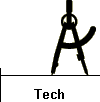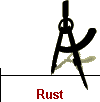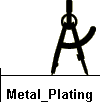|
 |
|
Rust Sucks! When I lived in Hot and Dry California my cars, bikes and tools never rusted. Here in Wisconsin, rust is a significant problem. It is especially bad for people who have workshops in their basements/cellars. Basements tend to be damper than heated rooms or garages, and dampness leads to rust. What Is Rust? Many materials react with oxygen to form a chemical compound that is a combination of that material and oxygen. When iron combines with oxygen, it forms iron oxide, or rust. Iron oxide is a larger molecule than iron, so if iron oxidizes, it often puffs up and may even flake. This is because the rust requires more physical space than the original iron. Some things cause steel or iron to rust faster than others. Water will cause iron and steel to rust. Dissimilar metals rust faster than single metals because of electrochemical reactions, so steel rusts faster than iron, and joints between dissimilar metals rust very quickly. Salt water will cause rust faster than water because salt water is a better electrical conductor. Like most chemical reactions, heat also speeds rust. If steel starts to rust, it will puff up because iron oxide is a larger molecule than iron. The puffing causes cracks and voids, which expose more bare metal to the environment. So the rusting of iron can progress and is only limited by destruction of all solid iron. Other metals oxidize, but the oxides of some other metals are no larger than the metal themselves, so they don't puff up or flake. For example, aluminum doesn't puff up when it oxidizes. This helps make aluminum oxide a good protective coating, rather than the start of rapid degeneration. Rust is really Fe2O3, a reddish form of iron oxide. Iron has another oxide, Fe3O4, which is sometimes called black oxide, black rust, or hammerscale. Black oxide is a good protection for steel. Like aluminum oxide, black oxide molecules are the same size as iron molecules, so black oxide does not grow or flake. Black oxide is true gun bluing and the oxide found on some drill bits. Black oxide is also seen on iron and steel that has been hot-worked. You can coat steel with black oxide by a careful regimen of rusting the right amount and boiling the rusted metal in water to convert it. This is how non-caustic gun bluing is done, and although it is tedious, it produces very attractive and durable results after several treatments.
|
|
[Tech] [Tool Section] [General] [Rust] [Metal_Plating] [Main Tech] [Model ID] [Diagrams] [Engines] |





